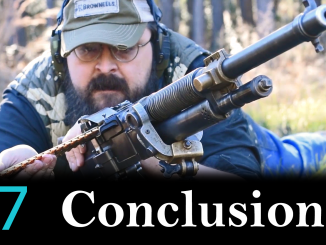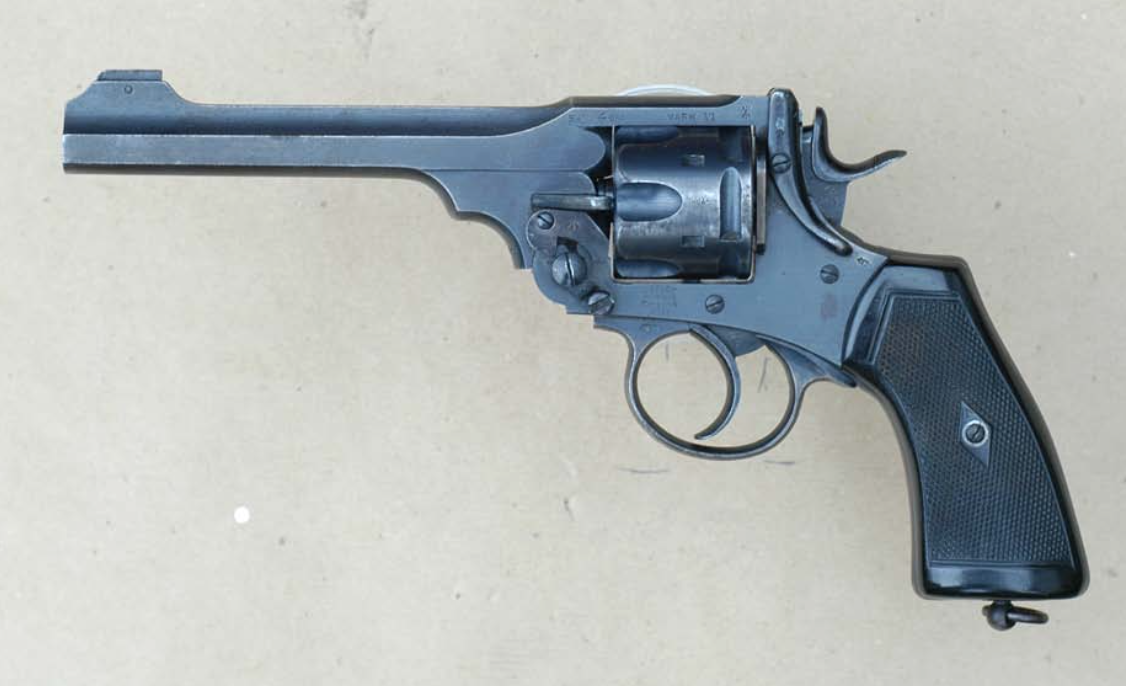Once Lee-Metford rifle production was in place, the British began working on a carbine version of the same action for their cavalry. In 1893 a trial run of 100 carbines were made, and today we are looking at serial number 32 of that batch. These carbines different in several ways from the ultimately adopted pattern. They had exposed muzzles like the Martini carbines, instead of the heavy snub-nose muzzle that would be adopted (similar to the muzzle of most early Mauser carbines). These trials carbines also had no safety, no sling attachments, and no barrel band. The did have the bent bolt handle of the final pattern (albeit not flattened down) and the short 6-round magazine.
Related Articles

Light MGs
Project Lightening Episode 07: Conclusions
Project Lightening is a collaborative series with Othais and Mae of C&Rsenal in which we test all seven light machine guns and automatic rifles of World War One and put them through a series of […]

Revolver
British Pistol Use During WWI
Here’s an interesting piece of research, done in 2010 by one David Thomas as part of a degree in British First World War Studies: The Pistol in British Military Service During the Great War (pdf) This […]

Commentary
How William Fairbairn Created the Modern SWAT Team in Warlord Era Shanghai
The Kickstarter for my new book, “Pistols of the Warlords” is live here! William E. Fairbairn is best know for his work with Eric Sykes and their “”Commando” knife design during World War Two. However, […]

I have to wonder how many actual cavalrymen thought giving up magazine capacity for carrying convenience was a good trade.
Especially when the standard magazine only projects about as far down as the TG, less so than the toe of the stock, and thus doesn’t actually increase any dimension of the rifle.
At 6 rounds the magazine was still bigger than nearly all other countries were issuing with rifles for their infantry.
It is unlikely that this is somehow related to the “wearability”.
Rather, the heavier magazine was breaking its retainer.
Or “jumped out” when shooting.
If we consider the magazine being made mostly of heavy-duty solid forged steel pieces, this is no surprise. Either you beef up the retention system or reduce magazine mass (and capacity). Please do not suggest the use of plastic magazines in that era, polymers of the time (if there were any) weren’t up to the task of making rifle magazines for the rather bash-crazy environment of war. I could be wrong.
What a sweet little stalking carbine! I wonder if any of the carbine patterns were made as “ground-up” civilian sporters? I’ve seen a number of Lee-Metford rifles that had been made for private sale.
GHOST AND THE DARKNESS rifle?